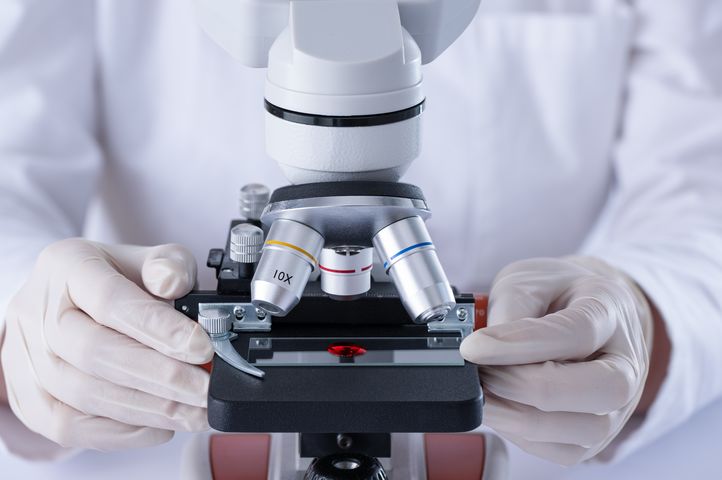Multiplex SNaPshot Assay-Based SNP Analysis for Disease Panel
Single Nucleotide Polymorphisms, or SNPs, are genomic loci where more than one alternative base occur with appreciable frequency (>1%). These occur in non-coding regions of the genome, as well as in genes, both introns and exons. SNPs can be used for several analyses such as differentiating drug and non-drug forms of Cannabis, mutations associated with various cancers, mitochondrial DNA investigations, genetic disease research, loss of heterozygosity, scrapie susceptibility in sheep, and assessing food animal production performance.
Multiplex SNaPshot Assay and Its Advantages
Multiplex SNaPshot Assay is a primer extension-based method that was developed to analyze SNPs. It can analyze up to 10 SNPs in a single reaction due to its multiplexing capability. This is regardless of the position of the SNPs on the chromosome, neither the amount of separation from other neighboring SNPs. This method is said to be cost-effective as it can use unlabeled, user-defined primers. Also, using this method, researchers can analyze more than 23,000 SNP genotypes in a day with only one genetic analyzer. Multiplex SNaPshot Assay has many advantages. These include high accuracy, high throughput level, has sensitive allele-frequency detection and automated analysis. Also, it saves time and money as it has a multiplex capability which lowers the cost per sample. Aside from the mentioned advantages, it requires little optimization, consistent, and user-friendly as it is easy-to-use.
 Figure 1. Multiplex SNaPshot Assay Workflow
Figure 1. Multiplex SNaPshot Assay Workflow
The first step in the Multiplex SNaPshot assay is the amplification of the targeted SNPs’ fragment using the primers. The Exo I and the Shrimp Alkaline Phosphate, or SAP, are then added to the products of the amplification to digest the primer and the remaining deoxynucleotides (dNTPs). Next, the purified products served as the templates and using the sequencing enzyme, four fluorescent labeling ddNTP and the 5‘- terminal extension primers close to the SNP site, polymerase chain reaction (PCR) is performed. The corresponding SNP loci are then determined based on the position and color of the peak after the sequencer. The type of the base, as well as the identity of the sample gene sequence, can be determined based on the color of the peak.
Multiplex SNaPshot Assay in Disease Research
CD Genomics’s SNaPshot Multiplex System is a powerful tool for SNP detection. It is widely used in population genetics research (such as the origin, evolution and migration of organisms) and disease-related genes. In addition, it also plays an important role in pharmacogenomics, diagnostics, and biomedical research.
In a study, Multiplex SNaPshot technology was applied to candidate genes associated with autoimmune and infectious diseases. Using this technology, they have developed a multiplex assay specifically designed to genotype 16 SNPs. Nine of these SNPs, IL1α, IL1β, IL6, IL10, IL12RB1, TLR2, TLR4, TLR9, and CD14, are associated with the innate immune system, which is the first line of host defense against invading organisms.
In cancer research, this technology was used in analyzing six colorectal cancer tissues with APC, K-ras, and p53 mutations. By getting the ratios of mutated and normal alleles, cancer cell subpopulations corresponding to putative precursors, which are cells with mutations in one or two of the three genes, have identified.
Multiplex SNaPshot assay was also applied in analyzing and identifying KRAS codons 12 and 13, as well as BRAF codon 600. KRAS mutations are said to be associated with resistance of organisms to treatment by monoclonal antibodies and are correlated with shorter progression-free survival. On the other hand, BRAF is said to be important in deciding the appropriate treatment.
References:
- Esteves LM, Bulhões SM, Mota-Vieira L, et al. Three multiplex snapshot assays for SNP genotyping in candidate innate immune genes. BMC research notes. 2013, 6(1):54.
- Magnin S, Viel E, Ferrand C, et al. A multiplex SNaPshot assay as a rapid method for detecting KRAS and BRAF mutations in advanced colorectal cancers. The Journal of Molecular Diagnostics. 2011, 13(5):485-92.
- Goranova TE, Ohue M, Kato K. Putative precursor cancer cells in human colorectal cancer tissue. International journal of clinical and experimental pathology. 2009, 2(2):154.
* For research purposes only, not intended for clinical diagnosis, treatment, or individual health assessments.
Related Services
Related Products
 Figure 1. Multiplex SNaPshot Assay Workflow
Figure 1. Multiplex SNaPshot Assay Workflow 








